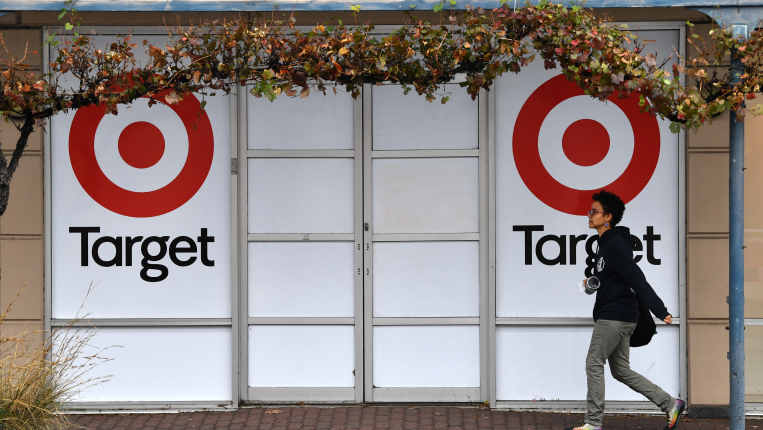Why Target ended up a $3.6b black hole
by Simon EvansWesfarmers had high hopes for Target and Kmart in late 2007 when it shelled out $19.3 billion for the entire Coles Group retail stable, in which the main prize was the Coles supermarkets chain.
The two discount department store chains were part of the purchase, but in the end it was Target that proved to be the lemon. That has ultimately been a surprise given that Target was lauded in late 2005 by then Coles Myer chief executive John Fletcher as delivering one of the best corporate turnarounds in Australia from 2003 to 2005.

Now it is Kmart that is the much better performer as Wesfarmers prepares to almost halve the Target network to 144 stores over the next 18 months, from 285, using conversions to Kmart or closures.
JPMorgan analyst Shaun Cousins calculates that since 2012 the total write-downs, impairments and reallocation of goodwill at Target amounts to $3.65 billion. This is higher than the $3.5 billion in value ascribed in a proportional allocation of the various retail brands, which also included Officeworks, at the time of the Wesfarmers acquisition.
When Target and Kmart were owned by Coles Group, and its predecessor Coles Myer, analysts were always bemused at how the two big discount department store chains never seemed to be able to perform at their top at the same time. One would wane, while the other would rise, and then the opposite would occur. They appeared to cannibalise each other.
But that question is now irrelevant, with structural shifts in the market putting discount department stores into a seemingly permanent downward spiral. Their upmarket cousins, department store operators David Jones and Myer, are also on a slippery slide lower. This was before the heavy jolt of COVID-19, which is hitting the economy hard and hastening the strife.
Professor Gary Mortimer, from QUT Business School, said the advent of fast fashion retailers Zara, Uniqlo and H&M had derailed Target, which had a big focus on apparel. The rise of online shopping had also been a major factor.
Before online shopping, people flocked to those outlets because there was an appealing array of brands under one roof.
But that advantage had been steadily whittled away and the value shopper could now always find those same brands at a cheaper price by searching online.
"People will always find brands cheaper elsewhere,'' Professor Mortimer said.
Target's resurgence in the early 2000s had come through a sharp focus on on-trend apparel. But at that time there weren't any of the European fast fashion retailers operating in Australia.
"When Target was romping home we didn't have H&M or Uniqlo or Zara,'' he said.
The general merchandise offerings by discount supermarket chains such as Aldi and US big-box retailer Costco had also clawed away sales from the core Target demographic.
Guy Russo, who retired in November 2018 after 10 years with the Wesfarmers conglomerate, led a major turnaround of Kmart after it had been the basket case of the group.
Kmart was repositioned as the value brand in the stable, but Target lost its way.
Professor Mortimer said Target customers became puzzled. The offerings included ultra-cheap T-shirts and the occasional Stella McCartney fashion designs.
"They were creating a very mixed message to their customers,'' he said.
"The core customer got confused.''
JPMorgan analyst Shaun Cousins said Wesfarmers had made a sound decision in announcing on May 22 the shutdowns and conversions at Target, ''with decisive action preferred over persistent restructurings that have extended the pain''.
John Fletcher in September 2005 said the turnaround at Target was the best across corporate Australia for years, as he vowed it would be able to maintain good levels of profitability in a sustainable fashion.
He promised substantial reinvestment in the Target stores and that the group would steer clear of "the temptation to milk the cow", as had happened under previous Coles Myer management.
Target's retail margin in 2004-05 improved substantially to 7.18 per cent, against 5.29 per cent a year earlier, with overall return on investment an impressive 47 per cent, compared with 32 per cent.
At the time, stablemate Kmart was producing margins of 2.3 per cent.
Big W restructuring
Wesfarmers chief executive Rob Scott said on Friday that some of the rental agreements had been put in place 10 or 15 years ago at Target and the structure of the retail market had shifted dramatically since then.
Citi analyst Bryan Raymond estimated the store closures and conversions would drive a 3 per cent fall in combined Kmart and Target sales, but a 3 per cent lift in combined 2021-22 earnings.
Woolworths is undertaking a restructuring and reinvigoration of its Big W chain, and in April 2019 announced an intention to close up to 30 stores and two distribution centres within three years. To date it has closed four Big W stores, giving it a network of 179 stores.
A Woolworths spokesman said on Monday the Big W turnaround was starting to translate into ''solid sales growth''.